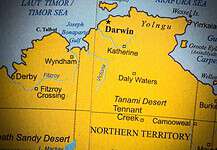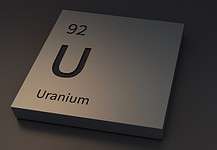LASER sorting technology developed by TOMRA is being used to unlock the full potential of quartz deposits.
With a structural approach to sorting that’s unique in the market, the scattering effect of multiple laser beams can be used to separate a quartz rock from a similar-looking one containing no quartz: quartz or quartz veins will appear as a glowing crystals because quartz returns the laser light in a larger area, while others will remain dark with no visible scattering.
Large and pure crystals can be clearly discriminated from other rocks or minerals with a smaller crystal structure, regardless of the colour or chemical composition.
Indeed, the quartz market is already witnessing a steady growth, and this trend is expected to continue.
Analysts are forecasting a compound annual growth rate of more than 4.5pc in the next five years, driven by the increasing demand from the electronics industry, mainly due to the more widespread use and increase in production of electronic devices in developing countries, including China, India, Thailand and Vietnam.
The metallurgical industry is consequently a key market for quartz: it is the best source of silicon metal and polysilicon, the semiconductor at the heart of electronics, which is also used for other products, such as photovoltaic cells.
Another important market is engineered stone, for uses such as kitchen countertops or tiles.
Silicon also has a vast range of uses in very different sectors, from the chemical and cosmetics industries to automotive applications, as well as in the production of quartz sand for livestock farming or golf courses, or for specialised applications such as artificial turf.
Quartz is one of the most common minerals, found in all forms of rock, but it doesn’t exist in high purity in nature: the challenge for mining operations serving the metallurgical and engineered stone industries is to reliably deliver quartz of consistently high chemical purity – and for engineered stone manufacturers, a white product with no impurities of the same colour, such as feldspar, is also essential.
TOMRA’s laser sorter stands out for being a gravity system rather than the conventional conveyor belt, so that both sides of the material are scanned and multiple characteristics such as surface structure, size, shape, brightness and colour distribution are processed simultaneously.
Laboratory tests and field experience have shown that the recovery of valuable rocks can be increased by 20pc while improving the quality of the product.
TOMRA Sorting Mining industrial mineral segment manager Jens-Michael Bergmann said the advantages for mine operations were multiple, from a longer life of the mine to lower operating costs and a reduction of waste, with consequent lower haulage costs.
“It also enables them to guarantee consistent high-quality of product to their customers,” he said.
TOMRA’s technology also has environmental benefits, due to the reduced waste and low water use, as only a small quantity is required for wet washing the rocks at the beginning of the process to avoid dust in the processing plant.
It eliminates the need for hand picking, which is required with colour sorting in order to achieve the high purity levels demanded by the metallurgy and engineered stone industries.
This has a positive impact on the mining operation’s health and safety conditions, as it means there is no exposure to silicon dust in the sorting process.









































